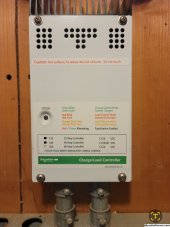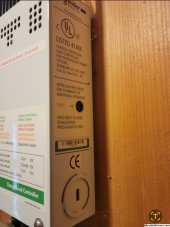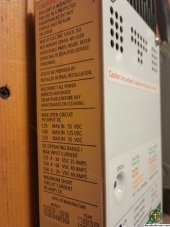OTG 4 LIFE
New Member
Hi, this is my 1st post so plz 4give if I'm asking a dumb question but, I have researched the problem exhaustively to the best of my ability and I'm on a time crunch, any help is GREATLY appreciated!
I have installed a solar system in a small RV so I'm not a total n00b, and I've read a lot but I think my problem is somewhat unique because of my situation.
I bought an off-grid cabin for my family and am LOVING it, it's been my life's dream. Previous owner had a DIY system that was built without really understanding, he just copied the system his dad built to the best of his ability using cheap and OLD parts.
I plan on redoing the whole thing AFTER I get back from a business trip that will require me to be gone for months. Meanwhile I need a quick solution that will keep my family from going w/o power while I'm away...
The battery bank I inherited is flooded lead acid, which worked fine until now (I think they are just at the end of their life cycle).
I have a bunch of LiFePo batteries for the big overhaul but, the current charger controller is a dinosaur. I'm sposta already be in Texas and every day I put off leaving is $ lost. SO...
I want to just replace the old batteries with another type of lead acid battery for now, so I don't have to change anything else. I'm thinking of using AGM cuz they're low maintenance and I think the old FLA ones may still be working if my wife had added water while I was away over the last few months, or they may have been overcharged - which brings me to my point.
Is there anything I can EASILY install on the input line into the battery bank to prevent overcharging? I have LVDC to prevent damage from overdraining on my systems, but the ancient charge controller doesn't have anything like a "high voltage disconnect" feature and, the diesel generator we use for most of our current power needs (there's only 2 solar panels currently on the roof - many more in the garage that are going up when I get back but, not nearly enough for now) is something my wife will likely forget to turn off many times while I'm gone.
So, is there a simple way to install a "HVDC" (High Voltage Disconnect) for the battery bank to prevent overcharging from the generator if it gets left on while I'm away?
I figure replacing the FLA with SLA batteries will take care of her forgetting to add water while I'm gone. But I've read that SLA batteries are vulnerable to overcharging, and I need a quick and easy way to make sure that doesn't happen while I'm away over the winter.
Thanks for reading all this and thanks in advance for any helpful suggestions that would be quicker and easier than replacing the charge controller with something not made in 2003 (yes, I know it's what I need to do eventually... I just need a quick fix for the battery bank until then).
I have installed a solar system in a small RV so I'm not a total n00b, and I've read a lot but I think my problem is somewhat unique because of my situation.
I bought an off-grid cabin for my family and am LOVING it, it's been my life's dream. Previous owner had a DIY system that was built without really understanding, he just copied the system his dad built to the best of his ability using cheap and OLD parts.
I plan on redoing the whole thing AFTER I get back from a business trip that will require me to be gone for months. Meanwhile I need a quick solution that will keep my family from going w/o power while I'm away...
The battery bank I inherited is flooded lead acid, which worked fine until now (I think they are just at the end of their life cycle).
I have a bunch of LiFePo batteries for the big overhaul but, the current charger controller is a dinosaur. I'm sposta already be in Texas and every day I put off leaving is $ lost. SO...
I want to just replace the old batteries with another type of lead acid battery for now, so I don't have to change anything else. I'm thinking of using AGM cuz they're low maintenance and I think the old FLA ones may still be working if my wife had added water while I was away over the last few months, or they may have been overcharged - which brings me to my point.
Is there anything I can EASILY install on the input line into the battery bank to prevent overcharging? I have LVDC to prevent damage from overdraining on my systems, but the ancient charge controller doesn't have anything like a "high voltage disconnect" feature and, the diesel generator we use for most of our current power needs (there's only 2 solar panels currently on the roof - many more in the garage that are going up when I get back but, not nearly enough for now) is something my wife will likely forget to turn off many times while I'm gone.
So, is there a simple way to install a "HVDC" (High Voltage Disconnect) for the battery bank to prevent overcharging from the generator if it gets left on while I'm away?
I figure replacing the FLA with SLA batteries will take care of her forgetting to add water while I'm gone. But I've read that SLA batteries are vulnerable to overcharging, and I need a quick and easy way to make sure that doesn't happen while I'm away over the winter.
Thanks for reading all this and thanks in advance for any helpful suggestions that would be quicker and easier than replacing the charge controller with something not made in 2003 (yes, I know it's what I need to do eventually... I just need a quick fix for the battery bank until then).






